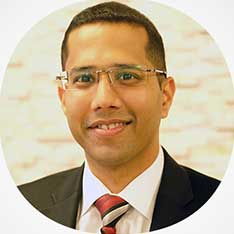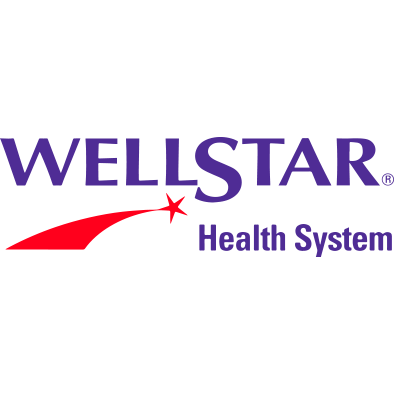The intuitive drive for provider status for pharmacists

“When it comes to drug therapy, which is the common denominator for our patients, pharmacists are uniquely situated to coordinate and deliver patient care.”
On this page:
- Q&A
- Vital Statistics
- Core Technology
“My marriage with pharmacy was an arranged marriage,” Snehal Doshi likes to joke. “My dad told me what to do. Soon after I started, I fell in love with pharmacy.” Today, Doshi leads pharmacy for WellStar, the largest health system in Georgia. He trusts his diverse practice background to help him oversee WellStar’s inpatient pharmacies, retail pharmacies, and pharmacy helpline. His quest to seek provider status for pharmacists is personal.
Q&A
-
Q: Your pharmacy background is quite unique. What lessons from your previous roles do you find helpful today?A: In addition to my military background, my previous roles included managed care, retail, and hospital settings. All that experience comes under a single umbrella here at WellStar. My background is beneficial because I can relate to different pharmacy scopes and practices and to different departments—and then tie everything together to drive pharmacy as one single point of impact.
-
Q: From those diverse practice settings, do you see a common, unifying theme?
A: The common denominator I see is expanded scope of practice. You can call it provider status.
I think pharmacists are uniquely positioned to make an impact, whether it’s workingwith other care providers or with population health or informatics, whatever it might be.
Why would pharmacists want provider status? Each of us likely has different reasons. But at the end of the day, I think that's the unifying goal of many pharmacists across practice settings.
Going back to the previous question about lessons learned, I was part of the effort to get the California legislature to pass SB-493, which granted provider status to pharmacists. We pushed and pushed and finally got the bill passed. After it passed, the question became, “Now what? We’re not getting paid for it. Now we have to get managed care involved.”
-
Q: When did you discover your passion for provider status?
A: My first exposure was in the military. There was a desire for all care providers—nurses, physician assistants, and doctors—to work at the top of our licenses. Pharmacy was no different. When there was a shortage of providers, pharmacists had the opportunity to expand their role into interdisciplinary care. That was always the standard.
Switching to the civilian world, I found a greater feeling of competition. Some nursesfelt pharmacists were coming into their territory; nurses had their own long fight for nurse practitioners. Some doctors felt patient consulting was out of scope for pharmacists, even though more pharmacists are training for this and completing residency programs.
Now those feelings are changing. Nurses have been more supportive. Our physician champions are coming to me saying, “Doshi, we think pharmacists are probably the best people to lead this patient initiative. What do you think?
”When you talk about population health initiatives or delivering on outcomes, it all boils down to pharmacy being strategically placed to make the most impact. When it comes to drug therapy, which is the common denominator for our patients, pharmacists are uniquely situated to coordinate and deliver patient care.
-
Q: How did you see the need for provider status manifest in your own practice areas?
A: From my time practicing pharmacy throughout my career, regardless of setting, it became evident that patients seek the advice and opinion of the pharmacist. From walk-ins at retail or through immunization programs, in specialty pharmacy, during point of care testing, and so forth, pharmacists are accessible to patients, and patients seek them out.
In many ways, the way pharmacists deliver care is being shaped by patient demand. At WellStar, we recognize this dynamic, that pharmacists are sort of gatekeepers of the healthcare system, and we’re trying new ventures to capitalize on that patient perspective. We have pharmacists providing virtual consultations, for instance, and we just launched a virtual anticoagulation program.
So, while pharmacy tries to remain relevant to the market, we are uniquely positioned to deliver value to patients. And I think by having that exposure a little bit in the military, that feeling that I am making a positive impact by working at the top of my license, it now drives me to want to see the contributions pharmacists actually can have in solving problems in healthcare.
-
Q: Was there a tipping point for you in the way health system leaders perceive pharmacy?
A: I think the tipping point was when leadership’s perspective started to change. We’restill responsible for increasing rebates, controlling costs, and managing drug shortages. But we’re now being viewed more as a group that provides value. That’s really the question: What value are you providing to the department and the organization?
We laid out a strategic pharmacy plan for WellStar. We’ve already done a lot of cost-cutting. It doesn’t have to be human capital all the time; we’ve invested in technology as well. We’ve partnered with Omnicell on IV robotics, IV workflow, and software. We invested in upgrading our automated dispensing cabinets and technologies.
There is no clear ROI on cabinets. Those are soft savings. Cabinets benefit the nursing department through accuracy, queuing, and workflow. But that's the value you’re creating. With the technology and improved workflows, you reduce nurse queuing, you reduce errors, and you increase patient care time. Those are value-added things. And I think pharmacy needs to do a better job of providing what valuewe have, as opposed to just cost cutting.
-
Q: What are you doing to rally support for provider status in Georgia?
A: Overall, the reaction in Georgia has been mixed. There has not been a unified effort to find out if there’s support for it or opposition. But the time is right to have the conversation.
In October 2019, WellStar is hosting a conference to discuss provider status for Georgia. We’ve invited colleagues and competitors representing health systems, retail pharmacies, the Georgia Pharmacists Association, deans of the colleges of pharmacy, technology companies, and more. WellStar’s executive team will deliver opening remarks. The plan is to get us all in one room and discuss our current state of pharmacy practice and where we see it progressing.
-
Q: What is the time horizon to see real change in Georgia?
A: I believe in the next two to three years we’re going to have some meaningful change. For example, central fill centers technically are not allowed in Georgia. I believe those basic rules will be modified and changed. Within the next five years, I believe we will have substantial change.
Some institutions are worried about the short term, and they may not want to take this on right now. But we have to start somewhere. We have to put a flag in the ground and say, “This is the mission. This is what we’re striving toward.”
Vital Statistics

WellStar Health System Atlanta, GA
- Staff beds2,775
- Employees25,000
- Medical Staff3,288
- Hospitals11
- Retail Pharmacies7
- Medical Office Locations300+
- Ambulatory Surgery Centres6
- Imaging Centres14
- Hospice3
- Skilled Nursing Facilities4
- Urgent Care Clinics16
Core Technology
EHR: Epic
Omnicell Technology:
- XT Automated Dispensing Cabinets
- XT Controlled Substance Manager
- XT Anesthesia Workstation™
- IVX compounding robot
- IVX Workflow
 Back to Customer Stories
Back to Customer Stories